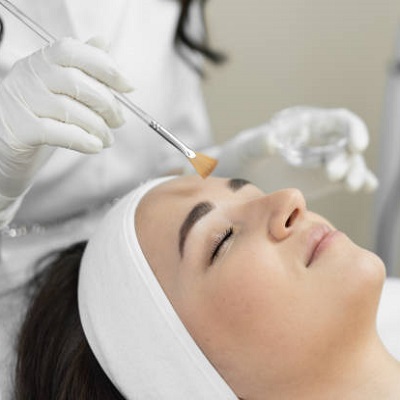
Makeup may draw attention to your best features and accentuate your face contours, but if you use too much of it to cover up flaws in your skin, you can also be concealing your true beauty. Most skin flaws that detract from your beautiful characteristics are skin texture and appearance. Chemical peels are useful for removing these flaws and exposing the fresh, clear skin behind them. Sometimes, it fails to get the desired results. It is easy to understand whether it worked for you or not. But, how to know if a chemical peel has yet to go as planned is discussed in this blog.
What is Chemical Peel?
A chemical peel is a skin-exfoliating procedure that has potent anti-aging properties. Different chemical peels address various skin issues, such as discoloration, big pores, texture, fine lines and wrinkles, and acne scars. The intensity of each chemical peel controls how deeply these imperfections penetrate the skin, which are present at different depths.
It might take one to seven days to complete a chemical peel, depending on how “heavy” of a peel you have done. At Skin Pharm, we provide medium-depth (or TCA) chemical peels. To get the desired effects, this peel combines retinoic acid, trichloroacetic acid, and alpha and beta hydroxy acids (AHAs and BHAs), such as lactic acid and salicylic acid. Planning far in advance may be necessary to renew your skin in time for a big day since the penetration depth also influences the healing process.
However, if you must be more diligent in selecting a reliable (read: qualified and licensed) practitioner for this procedure, you should be aware of the potential side effects and hazards of chemical peels.
How To Know If a Chemical Peel Has Not Gone as Planned:
Although most chemical peels are safe, there may be some adverse effects. Therefore, how to know if a chemical peel has gone differently than planned? There may be some symptoms that clearly can show you it is not as it was planned.
Your skin will likely be red, tight, inflamed, and somewhat swollen after any chemical peel. That is not always indicative of a chemical peel gone bad. Differentiating between what is typical and expected and what is something you should be concerned about is crucial.
Let us discuss a few of the most typical adverse effects of chemical peeling.
- Burning and Pain: Pain and burning are common symptoms in patients with sensitive skin. Re-epithelialization, or the process by which old skin sheds and new skin grows in its place, may go on for up to five days after the treatment.
- Redness on the Skin: After each peel, there will inevitably be some redness. It usually goes away three to five days after the mild chemical peel, fifteen to thirty days after the medium peel, and sixty to ninety days after the deep peel. Should your redness last longer than that, it may indicate possible scarring.
- Scars on the Skin: Spots on the treated skin may become white after a chemical peel. This phenomenon, known as frosting, signifies a thorough penetration of the acids into the epidermis. It is common and often indicates that those areas will have the most severe peeling.
- Patches and Hyperpigmentation: Both hypopigmentation patches of lighter skin and hyperpigmentation patches of darkened skin may result during a chemical peel.
- Swelling: This danger is most common in medium- and deep-peeled skin types, although it may also occur in superficial peels in those with dry, thin, or damaged skin. It happens between 24 and 72 hours after the therapy. While swelling goes down on its own with time, administering cold helps hasten the healing process.
- Continues Itching: Itching may happen after resurfacing newly regenerated skin and after superficial and deep peels. While some itching is typical throughout the healing process, severe itching may indicate an infection or dermatitis.
- Breakouts: In the first weeks of the healing process, breakouts are possible, mainly in those with thicker skin. Skin congestion may result in the formation of cysts, pimples, and milia, which are little white lumps. The majority of the time, these outbreaks go away on their own, but sometimes, careful, sterile extraction may be required.
Conclusion:
If you are familiar with the day-to-day chemical peel process, you can better anticipate what to expect if you undergo this revolutionary cosmetic procedure. Although the healing process could last longer than other cosmetic procedures, the results are long-lasting and often surpass people’s expectations. A chemical peel can minimize the appearance of spots, dark circles, scars, and signs of aging.
Make an appointment with the Dynamic Clinic Islamabad for a consultation with an expert to start your journey toward improved skin.



